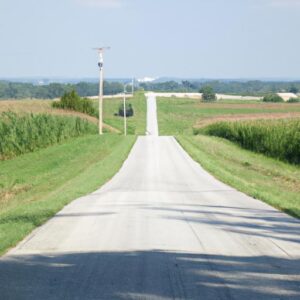Introduction
Have you ever wondered how rain can influence your fishing experience? Picture this: standing by the water’s edge, raindrops gently pattering on the surface, creating ripples that blend with the natural rhythm of the river or lake. As an avid angler, understanding the impact of rain on fishing is crucial to maximize your chances of a successful catch. In this article, we will delve into the fascinating world of fishing under rainy conditions and uncover the secrets that lie beneath the surface.
Rain has a profound effect on various aspects of fishing, from water temperature to fish behavior and feeding patterns. By comprehending these effects, you can adapt your techniques and enhance your chances of reeling in that prized catch. So, whether you’re a seasoned angler or a beginner, let’s embark on this exploration together to unlock the potential hidden within the rain-soaked realm.
In the following sections, we will discuss how rain affects fishing, explore the best techniques to employ during rainy conditions, identify prime fishing spots, and provide tips specifically tailored for the rainy season. By the end of this article, you’ll be equipped with the knowledge to navigate the watery domain with confidence and finesse. So, grab your rain gear, bait your hook, and let’s dive into the captivating world of fishing amidst the rain!
Stay tuned for Section II, where we will dive into the captivating question: “How does rain affect fishing?”
How Does Rain Affect Fishing?
Understanding the Influence of Rain on Fishing Factors
When raindrops kiss the water’s surface, a symphony of changes begins to unfold beneath the tranquil facade. The first impact of rain on fishing lies in the alteration of crucial fishing factors. One such factor is water temperature, which can experience fluctuations due to rain. As rainwater blends with the existing body of water, it can either cool it down or warm it up, depending on the prevailing conditions. These temperature changes can directly affect fish behavior, leading to a shift in their feeding patterns.
Changes in Water Temperature and Oxygen Levels
As rainwater enters the water body, it brings with it colder or warmer temperatures, depending on the external climate. For example, during hot summer days, rain can provide a refreshing respite by cooling down the water. Conversely, in colder climates, rain can have a warming effect on the water, creating a more favorable environment for certain fish species. These temperature variations can trigger changes in fish metabolism and influence their movement patterns.
Furthermore, rain plays a crucial role in oxygenation. When rain falls, it introduces oxygen into the water, enhancing the dissolved oxygen levels. This increase in oxygen can stimulate fish activity and promote better feeding opportunities. However, heavy rainfall can also lead to excessive runoff, carrying sediments and pollutants into the water, which may have adverse effects on fish health.
Impact on Fish Behavior and Feeding Patterns
Rain has a remarkable ability to influence fish behavior. Some species become more active and opportunistic feeders during or immediately after rainfall, while others may become more elusive or retreat to sheltered areas. The vibrations caused by raindrops hitting the water’s surface can mimic the sound of prey, attracting certain fish species to investigate and strike. Additionally, rain can increase the turbidity of the water, making it harder for fish to see, which can make them more inclined to bite.
Understanding these changes in fish behavior and feeding patterns is vital for anglers seeking to optimize their catch. By adapting your fishing techniques to match these shifts, you can increase your chances of success, even in the midst of a rain shower.
Stay tuned for Section III, where we will uncover the secrets of “Fishing Techniques in Rainy Conditions” and equip you with the skills to conquer the rain-soaked waters.
Fishing Techniques in Rainy Conditions
Tips for Fishing in the Rain
When the rain starts falling, it’s time to adapt your fishing techniques to make the most of the conditions. Here are a few tips to help you navigate the rainy realm:
-
Stay Covered, Stay Comfortable: Investing in quality rain gear is essential to ensure your comfort throughout the fishing trip. A waterproof jacket, pants, and boots will keep you dry and allow you to focus on the task at hand.
-
Embrace Stealth: Rain tends to muffle sound and create a natural cover, making fish less cautious. Take advantage of this by adopting a stealthy approach. Move quietly, avoid unnecessary splashing, and cast your line with finesse.
-
Slow & Steady Wins the Race: In rainy conditions, fish tend to become more sluggish. Adjust your fishing technique by slowing down your retrieval speed. This will give fish ample time to notice and strike at your bait.
Importance of Adjusting Bait and Lure Choices
Choosing the right bait and lures is crucial when fishing in the rain. The change in water conditions affects fish behavior and feeding patterns, requiring you to adapt your offerings. Consider the following:
-
Bright and Noisy: Rainwater can reduce visibility, making it harder for fish to spot your bait. Opt for bright-colored lures or bait that create noise, such as spinnerbaits or topwater poppers. These attention-grabbing options increase your chances of luring fish in adverse weather.
-
Natural and Subtle: On the other hand, some fish may become more cautious during rainfall. In such cases, using natural-colored baits or soft plastic lures that mimic prey can be effective. The subtlety and realism of these offerings can entice fish to strike.
Effective Strategies to Attract Fish During Rainy Weather
Rainy weather can present unique opportunities to attract fish. Here are a few strategies to consider:
-
Follow the Rain: Rainfall washes nutrients into the water, triggering a feeding frenzy. Focus on areas where runoff enters the water body, as these locations often attract hungry fish seeking an easy meal.
-
Target Structure: Fish tend to seek shelter and cover during rainy weather. Therefore, casting your line near structures like fallen trees, rocks, or submerged vegetation can increase your chances of a bite. These structures provide fish with a sense of security and serve as ambush points for their prey.
Remember, adapting your fishing techniques to the rainy conditions can yield fruitful results. By incorporating these tips into your strategy, you’ll be well on your way to reeling in the big one, even in the midst of a downpour.
Stay tuned for Section IV, where we will explore the best fishing spots during rainy weather!
Best Fishing Spots During Rain
When rain graces us with its presence, it’s essential to identify the best fishing spots that offer optimal conditions for a successful catch. Let’s explore some key considerations when selecting your fishing spot during rainy conditions.
1. Identification of Ideal Fishing Locations during Rainy Conditions
During rainfall, certain areas become hotspots for fish activity. These locations are typically characterized by favorable conditions that fish seek in search of food and shelter. One such spot is near inflowing streams or rivers, where the rainwater brings fresh nutrients and creates an enticing feeding ground for fish. Additionally, areas with structure, such as fallen trees or submerged rocks, provide shelter and attract fish seeking refuge from the rain. By identifying these prime fishing locations, you can significantly increase your chances of landing a catch.
2. Factors to Consider when Selecting a Fishing Spot in the Rain
When choosing a fishing spot in the rain, it’s crucial to consider various factors that can impact fish behavior. Pay attention to the water’s clarity, as heavy rainfall can cause sediment runoff, resulting in murky or muddy water. Fish tend to be less active in such conditions, making it more challenging to entice them with your bait. However, if you spot areas with slightly clearer water, they may hold a higher concentration of fish seeking better visibility.
Another factor to consider is the water’s flow rate. After prolonged rainfall, rivers and streams may experience increased water flow, which can disorient fish and make them seek calmer areas. Look for eddies or slack-water zones near the main current, as these spots provide a refuge for fish during heavy rain.
3. Importance of Understanding Fish’s Response to Rain in Different Water Bodies
Different water bodies, such as rivers, lakes, and ponds, can exhibit varying responses to rain. In rivers, heavy rainfall can cause water levels to rise, creating faster currents that alter fish behavior. In this scenario, fish tend to move closer to the riverbanks or seek areas with slower currents. On the other hand, lakes and ponds may experience changes in water temperature and oxygen levels due to rain, influencing fish activity. Understanding these unique responses in different water bodies will help you strategically choose the most promising fishing spots during rainy conditions.
By considering these factors and adapting your fishing approach accordingly, you can optimize your chances of success when fishing in the rain. Remember, each fishing spot may have its own nuances, so experiment and observe how fish respond to rain in your preferred locations.
Stay tuned for Section V, where we will share valuable tips specifically tailored for fishing during the rainy season!
Rainy Season Fishing Tips
When the rainy season arrives, it brings with it a host of unique fishing opportunities. By understanding the behavior of fish during this time and adapting your approach accordingly, you can increase your chances of a successful catch. Here are some valuable tips to help you make the most of your fishing adventures during the rainy season.
1. Advice for Fishing During the Rainy Season
Fishing during the rainy season requires a few adjustments to your usual techniques. Firstly, it’s crucial to pay attention to safety. Ensure you have appropriate rain gear, such as a waterproof jacket and boots, to stay dry and comfortable throughout your fishing expedition. Additionally, be aware of any changes in water levels and currents, as heavy rain can affect the overall conditions of the water body.
2. Understanding Seasonal Fish Migration Patterns
During the rainy season, fish often exhibit distinct migration patterns. Some species may move to shallower waters or near the riverbanks to spawn, while others may venture towards deeper areas seeking shelter. Researching the specific fish species in your area and their migration habits can provide valuable insights into where to find them during the rainy season.
3. Tips for Taking Advantage of Rainy Season Opportunities
a. Utilize Natural Baits: Rainwater runoff often carries various insects, worms, and other natural food sources into the water, attracting hungry fish. Take advantage of this by using live baits that mimic the local prey. Worms, minnows, or even insects like grasshoppers can prove highly effective in enticing fish to bite.
b. Adjust Your Presentation: Fish may become more sluggish during the rain, so it’s essential to modify your presentation. Slow down your retrieval speed and use subtle movements to mimic injured or easy prey. This approach can entice even the most cautious fish to strike.
c. Target Structure and Cover: Rainy conditions can push fish towards structure and cover for protection and to take advantage of the increased food supply. Focus your efforts around submerged logs, vegetation, or any other underwater structures where fish might seek refuge.
Remember, fishing during the rainy season can provide unique opportunities to catch fish that are more active and feeding. By understanding the migration patterns, adjusting your techniques, and targeting the right areas, you can make the most of these rainy season opportunities and enhance your angling success.
Stay tuned for the upcoming sections as we explore the best fishing spots during rain and conclude our journey with final thoughts on the impact of rain on fishing.
Conclusion
In conclusion, the question of whether rain affects fishing has been answered with resounding clarity. Rain plays a significant role in shaping the conditions that fish thrive in, from influencing water temperature and oxygen levels to altering fish behavior and feeding patterns. By understanding these dynamics, anglers can adapt their techniques and strategies to make the most of rainy conditions.
Throughout this article, we have explored the impact of rain on fishing and provided valuable insights into fishing techniques, ideal spots, and tips for the rainy season. Armed with this knowledge, you can confidently cast your line and navigate the ever-changing waters, increasing your chances of a bountiful catch.
Remember, fishing in the rain presents a unique opportunity to connect with nature and the aquatic world in a profound way. It’s a chance to challenge yourself and embrace the beauty of fishing amidst the raindrops. So, when the skies darken and the rain begins to fall, don’t let it deter you. Embrace the mystery and excitement that rain brings to your fishing adventures.
Now that you’re equipped with this newfound understanding, it’s time to put it into practice. Venture out into the rain, explore different fishing techniques, seek out the best spots, and adapt to the changing conditions. The watery realm eagerly awaits your arrival, ready to reveal its secrets and reward your efforts.
So, grab your gear, cast your line, and let the raindrops guide you towards an unforgettable fishing experience. Remember, rain may be falling from above, but the possibilities beneath the surface are endless. Happy fishing!





